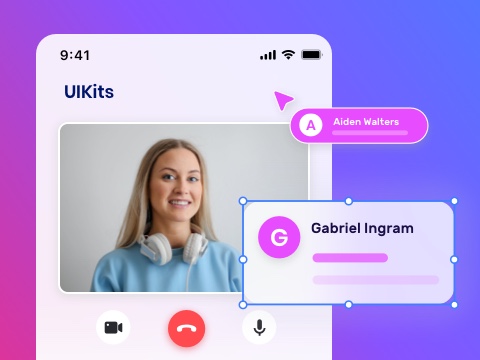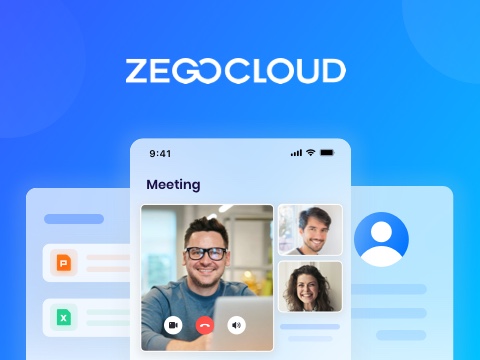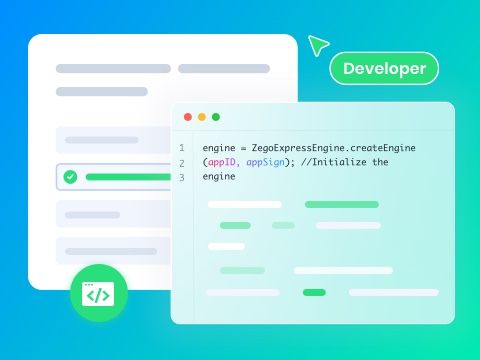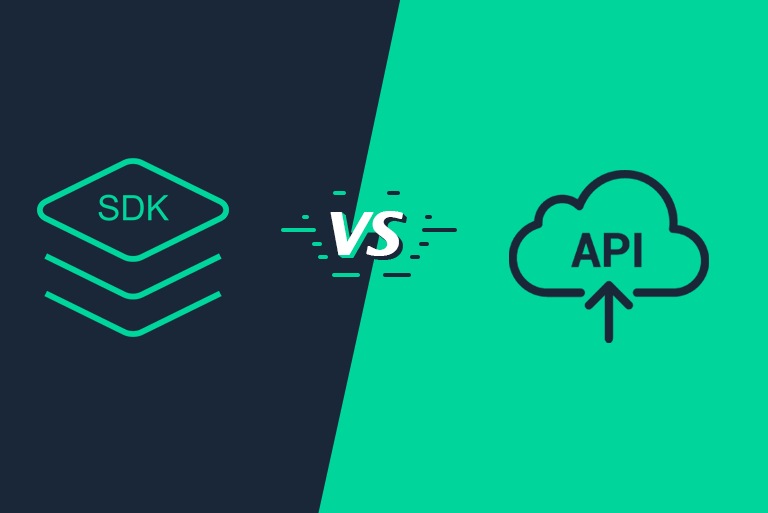SDK vs API are vital tools that developers use to enhance their applications. However, their roles and functionalities differ significantly. While APIs provide a set of rules and protocols for interacting with software components, SDKs offer a comprehensive set of tools, libraries, and documentation to simplify the development process. In this discussion, we’ll delve into the distinctions between SDKs and APIs, exploring their unique features and use cases.
What is SDK?
SDK, or Software Development Kit, is a collection of tools and resources developers use to build software applications. It provides the building blocks necessary for creating specific software for a platform. For example, mobile devices or web applications. The SDK typically includes libraries, documentation, code samples, and tools to help developers start quickly and efficiently.
An SDK makes the development process more accessible by offering pre-built components that can be seamlessly incorporated into an application. For example, a mobile SDK may include libraries for accessing the device’s camera, accelerometer, or touch screen. A web SDK may include libraries for specific web technologies like HTML, CSS, and JavaScript.
One of the primary benefits of using an SDK is that it saves developers time and effort by eliminating the need to create complex software components from scratch. SDKs also provide a consistent and streamlined approach to software development. Therefore, helping developers to focus on creating unique and innovative solutions.
Benefits of Software Development Kits
Software Development Kits (SDKs) offer numerous benefits that streamline and enhance the development process for applications across various platforms. Here are some of the key advantages:
- Rapid Development: SDKs provide a comprehensive suite of tools and libraries, enabling quicker development and faster time-to-market.
- Consistency and Reliability: Standardized components within SDKs ensure applications are mo
- Rapid Development: SDKs provide a comprehensive suite of tools and libraries, enabling quicker development and faster time-to-market.
- Consistency and Reliability: Standardized components within SDKs ensure applications are more consistent and reliable.
- Access to Platform Features: SDKs make it easy to implement platform-specific capabilities, enhancing app functionality and user experience.
- Ease of Use: With detailed documentation and examples, SDKs simplify the learning process, allowing developers to quickly adopt new technologies.
- Cost Efficiency: By offering ready-to-use solutions for common tasks, SDKs reduce development time and costs, allowing teams to focus on unique features.
- re consistent and reliable.
- Access to Platform Features: SDKs make it easy to implement platform-specific capabilities, enhancing app functionality and user experience.
- Ease of Use: With detailed documentation and examples, SDKs simplify the learning process, allowing developers to quickly adopt new technologies.
- Cost Efficiency: By offering ready-to-use solutions for common tasks, SDKs reduce development time and costs, allowing teams to focus on unique features.
SDK Use Cases
Software Development Kits (SDKs) are versatile tools that serve a wide range of use cases across the tech industry. Here are some common scenarios where SDKs are particularly useful:
- Mobile App Development: For accessing native device features like GPS and cameras. Incorporating ZEGOCLOUD SDK enhances mobile apps by adding real-time video, voice, and in-app messaging capabilities, making it ideal for social, entertainment, or collaborative applications.
- Game Development: Offering tools for graphics rendering, physics, and input handling.
- Augmented Reality (AR) & Virtual Reality (VR): Providing functionalities for immersive environment creation and interaction.
- Payment Processing: Simplifying the integration of secure payment transactions into apps.
- Social Media Integration: Enabling login authentication and content-sharing capabilities.
- Cloud Services Integration: Facilitating the use of cloud computing, storage, and machine learning services.
- Analytics & User Engagement: Allowing the collection and analysis of user data to improve app performance.
- Internet of Things (IoT): Supporting the connection, monitoring, and control of IoT devices and data.

What is API?
An API, or Application Programming Interface, is a set of rules and protocols that allows different software systems to communicate with each other. It is an intermediary between software systems, allowing them to exchange data and perform specific actions. It can access API services like weather data, social media posts, or payment processing services.
APIs allow developers to access the functionality of existing software systems and integrate it into their own applications.
APIs can expose specific functionalities or data to developers, allowing them to build or improve new applications. Additionally, APIs can streamline the development process by providing a standardized way to access specific functionalities or data.
Benefits of Application Programming Interfaces
Application Programming Interfaces (APIs) bring a host of benefits to software development, enhancing functionality, efficiency, and integration capabilities:
- Simplifies Integration: APIs enable seamless communication and data sharing between different software systems, making integration effortless.
- Enhances Functionality: They allow developers to add complex features to their applications quickly by accessing external services, without reinventing the wheel.
- Saves Time and Resources: By providing pre-built functionalities, APIs significantly reduce development time and save on resources.
- Facilitates Innovation: APIs make it easier for developers to build on existing platforms and services, encouraging the creation of new, innovative solutions.
API Use Cases
APIs (Application Programming Interfaces) enable diverse functionalities across various domains. Here are some common use cases:
- Data Integration: Syncing data between different software platforms, like CRM and email marketing tools.
- Payment Systems: Facilitating secure online transactions through services like PayPal or Stripe.
- Social Media Services: Allowing applications to post content, authenticate users, and fetch user data from platforms like Facebook or Twitter.
- Maps and Location Services: Integrating mapping, navigation, and location data into apps via Google Maps or similar services.
- Weather Services: Incorporating real-time weather information into applications from sources like the OpenWeatherMap API.
- Healthcare Applications: Securely accessing patient records and health data through healthcare APIs complying with legal standards.
- E-commerce: Enhancing online shopping experiences with APIs for payment processing, product recommendations, and inventory management.
- IoT Devices: Connecting and managing Internet of Things devices, facilitating communication and data exchange between devices and servers. ZEGOCLOUD APIs can play a pivotal role here, offering scalable solutions for real-time communication within IoT ecosystems, and enhancing device interactivity and user engagement.
- Machine Learning and AI: Embedding AI functionalities like image recognition, language translation, or chatbots into applications through APIs provided by AI platforms.
- Analytics and Reporting: Integrating with analytics platforms to gather insights on user behavior, app performance, or marketing campaigns.
How Do Developers Use SDKs?
Developers use SDKs (Software Development Kits) as comprehensive toolsets to build applications for specific platforms or technologies. Here’s how developers typically engage with SDKs:
- Setup and Installation: Begin by downloading and integrating the SDK into their development environment for the specific platform they’re targeting.
- Accessing APIs: Use the SDK’s APIs to easily interact with the platform or service, enabling features like network requests or user interface elements without deep knowledge of the underlying system. For example, with ZEGOCLOUD video call SDK or voice call SDK, developers can effortlessly incorporate real-time communication features into their apps.
- Utilizing Libraries: Implement libraries provided by the SDK for common tasks, reducing the need to write complex code from scratch and ensuring optimized performance.
- Development Tools: Employ built-in tools for coding, debugging, and testing, which help in efficiently developing and refining applications.
- Learning Through Documentation and Samples: Rely on the SDK’s documentation and code samples to learn how to use its features effectively, often accelerating the development process.
How Do Developers Use APIs?
Developers use APIs (Application Programming Interfaces) to extend the functionality of their applications, communicate with other software applications or services, and access data or features outside their application’s scope. Here’s a simplified overview of how developers typically use APIs:
- Integration: To enable different software systems to communicate, share data, and function cohesively.
- Data Access: To fetch and manipulate data from external sources, enriching applications with diverse information.
- Functionality Extension: To add features to their applications by leveraging external services, like maps or payment gateways, without building these features from scratch.
- Automation: To streamline processes, allowing software applications to automatically perform tasks without human intervention.
- Customization: To tailor applications to specific needs or user preferences, enhancing the overall user experience.
SDK vs. API: what’s the Difference?
When building software or integrating features, developers often choose between SDKs and APIs. While both serve to accelerate development, they differ significantly in scope, functionality, and flexibility.
| Category | SDK (Software Development Kit) | API (Application Programming Interface) |
|---|---|---|
| Definition | A full set of tools, libraries, documentation, and code samples to help build software | A set of rules and protocols for interacting with external systems or services |
| Purpose | Enables developers to build complete applications or integrate specific features | Allows apps to communicate with other apps or services |
| Components | May include APIs, compilers, debuggers, UI elements, and more | Typically includes only interface definitions and endpoints |
| Ease of Use | Easier for beginners—provides prebuilt functionality and tools | Requires more setup—developers must build around the interface |
| Use Case Example | ZEGOCLOUD Web SDK for building real-time video calling features | ZEGOCLOUD RESTful API to fetch call logs or analytics |
| Dependency | SDK may include multiple APIs inside it | APIs can exist independently or be part of an SDK |
| Integration Time | Faster for feature-rich, out-of-the-box implementations | Better for lightweight, customized integrations |
| Flexibility | Less flexible but more complete | More flexible, developer has more control |
When to Use an SDK
Choose an SDK for a comprehensive set of development tools and libraries when building a complex application from scratch, especially if it heavily relies on platform-specific features.
- You’re Developing a Comprehensive Application: SDKs provide a complete set of tools for developing applications on a specific platform or technology. If you’re building a complex application that requires extensive support for development, testing, and deployment, an SDK can offer the integrated environment you need.
- You Need a Cohesive Set of Tools and Libraries: SDKs come bundled with a range of tools, libraries, documentation, and code samples that are designed to work together seamlessly. This can significantly speed up the development process by providing everything you need in one package.
- Platform-Specific Features Are Essential: If your application needs to leverage platform-specific features (e.g., accessing hardware components on a smartphone), SDKs tailored for those platforms will provide the necessary tools and APIs in a unified package.
When to Use an API
Choose an API for integrating specific functionalities or services into your existing application, when you need a lightweight solution, or when you’re focusing on a particular aspect of integration without needing the full suite of tools provided by an SDK.
- Integrating Specific Services or Data: If your application needs to connect with other software or services (e.g., social media platforms, payment gateways, or data services), using their APIs is the most straightforward way to achieve this integration.
- Adding Limited External Functionality: When you need to add specific functionalities to your application that are provided by external services (like geolocation, maps, or weather information), APIs allow you to do so without the overhead of an entire SDK.
- Custom Integration Is Needed: APIs offer the flexibility to integrate only the parts you need into your application. This is useful for custom solutions where you want to keep the application lightweight or only require a subset of the functionality offered by a full SDK.
SDKs, APIs, and ZEGOCLOUD
Understanding the difference between SDKs and APIs is key to making the right technical decisions. SDKs offer a fast, streamlined way to integrate real-time features with minimal effort, while APIs provide the flexibility to build custom logic and backend workflows.
With ZEGOCLOUD, you get the best of both worlds. Whether you prefer the simplicity of a prebuilt SDK or the control of an API-driven integration, ZEGOCLOUD offers robust, scalable solutions to help you build powerful real-time communication experiences—your way.
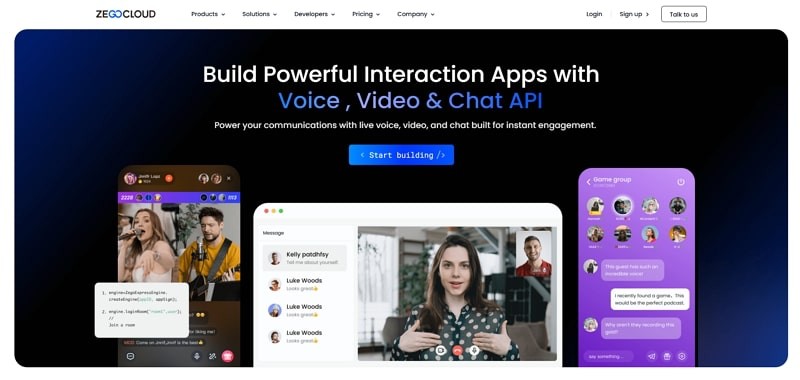
Conclusion
The distinction between SDK vs API lies in the purpose they serve and the tools they offer. An SDK provides pre-built components to simplify the development process, while an API facilitates communication and resource sharing between systems.
ZEGOCLOUD offers developers an SDK and API solution to quickly build robust, efficient applications. So why wait? Sign up and start building your app today with ZEGOCLOUD SDK/API.
Read More:
SDK vs API FAQ
Q1: Is an SDK the same as an API?
No, an SDK (Software Development Kit) is not the same as an API. An SDK is a full set of development tools that may include APIs, libraries, documentation, and UI components. An API (Application Programming Interface) is a part of an SDK, used for enabling communication between software systems.
Q2: What is an SDK used for?
An SDK helps developers build applications faster by offering prebuilt tools, libraries, and code.
It simplifies the integration of features like messaging, video calls, or authentication without building them from scratch.
Q3: What is the difference between SDK, API, and library?
- SDK: A complete toolkit for development, often including APIs and libraries.
- API: A set of rules that allows two software systems to communicate.
- Library: A reusable set of code that performs specific functions within an app.
Summary: SDKs often include both APIs and libraries to accelerate development.
Q4: What is an example of an SDK?
ZEGOCLOUD Web SDK is a great example. It enables developers to add real-time audio and video communication to web apps, combining APIs, UI components, and media capabilities in one powerful toolkit.
Let’s Build APP Together
Start building with real-time video, voice & chat SDK for apps today!


